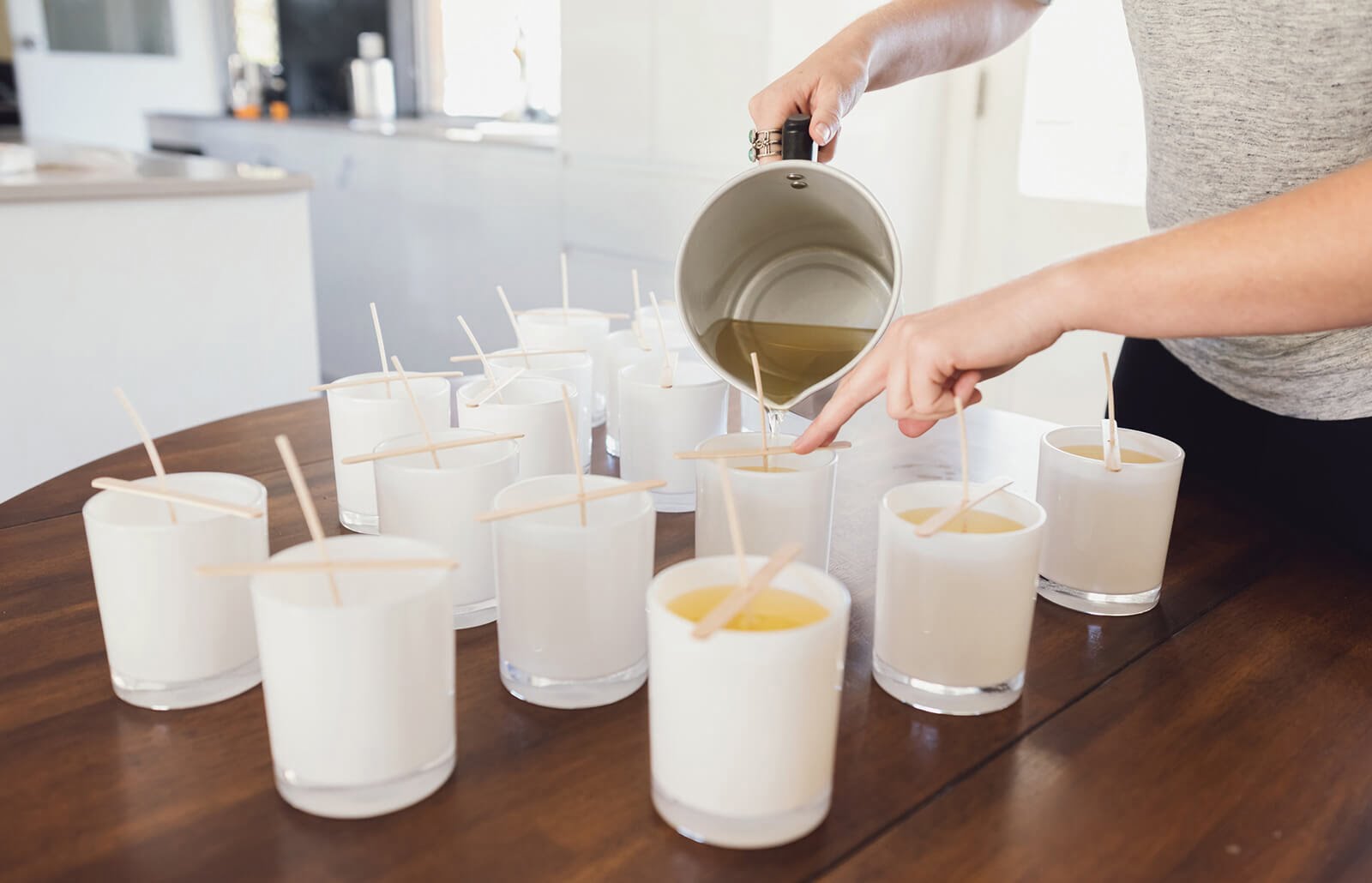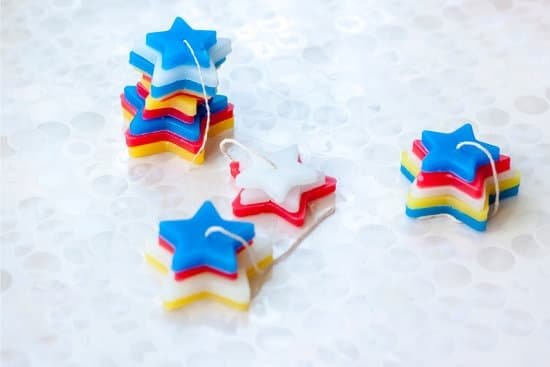Are you tired of making candles only to find wax leaking out the bottom? This common issue can be frustrating for candle makers, but understanding the factors that contribute to wax leakage and learning how to prevent it can help you create beautiful, non-leaking candles at home.
In this article, we will explore the science behind candle making, tips for choosing the right wax, proper wick placement and size, ensuring proper candle cooling, troubleshooting common causes of wax leakage, the role of proper candle storage, and expert advice for making candles that don’t leak wax out the bottom.
When it comes to making candles, wax leakage can be a common problem that many beginners face. There are several factors that contribute to this issue, including the type of wax used, wick placement and size, as well as the cooling process. Understanding these factors is key to preventing wax leakage and creating high-quality candles at home.
In the following sections, we will delve into the science behind candle making and examine how different factors play a role in causing wax leakage. We will also provide essential tips for choosing the right wax for your candles and ensuring proper wick placement and size.
Additionally, we will discuss the importance of proper candle cooling and offer troubleshooting advice for fixing common causes of wax leakage. Whether you’re new to candle making or looking to improve your skills, this article will provide valuable insights into preventing wax leakage in your homemade candles.
The Science Behind Candle Making
One of the key factors that contribute to wax leakage in candles is the type of wax used. Different waxes have different melting points, and using a wax with a lower melting point can increase the likelihood of leakage. For example, paraffin wax has a lower melting point than soy wax, so candles made with paraffin are more prone to leaking. It’s important to choose a wax with a higher melting point to reduce the risk of leakage.
Another factor to consider is the ratio of fragrance oil to wax when making scented candles. Adding too much fragrance oil can cause the candle to become too soft and increase the likelihood of wax leakage. It’s important to follow recommended guidelines for fragrance oil usage to ensure that the candle maintains its structure and doesn’t leak.
Additionally, the size and placement of the wick play a significant role in preventing wax leakage. A wick that is too large can cause the candle to burn too hot, leading to excess liquid pooling at the bottom and potential leakage. Properly positioning the wick in the center of the candle and choosing the right size based on container diameter are essential steps in preventing wax from leaking out the bottom.
| Factors | Contribution |
|---|---|
| Type of Wax | Different waxes have different melting points |
| Fragrance Oil Ratio | Adding too much fragrance oil can make candles too soft and prone to leaking |
| Wick Size and Placement | Choosing a proper wick size and positioning it correctly is crucial for preventing leakage |
Choosing the Right Wax for Your Candles
When it comes to making candles, choosing the right wax is crucial in preventing wax leakages. The type of wax you use can greatly impact the overall quality and performance of your candles.
One of the main factors that contribute to wax leakage is using the wrong type of wax for your specific candle-making needs. Different waxes have different melting points and burn characteristics, so it’s important to select the appropriate wax for the style of candle you are making.
One popular type of candle wax is paraffin wax, which has a low melting point and can often lead to wax leakage if not properly combined with other types of waxes or additives. Soy wax, on the other hand, has a higher melting point and produces a cleaner burn, making it less prone to leaking. Beeswax is another option known for its natural and non-toxic qualities, but improper handling can also result in wax leakage issues.
To prevent wax leakages, it’s essential to consider the composition and characteristics of different waxes before choosing one for your candles. Each type of wax has its own set of pros and cons, so it’s important to do thorough research and testing before settling on a specific type for your candle-making projects. By understanding the properties and behavior of different waxes, you can take proactive steps in preventing any potential issues with wax leakage.
In addition to selecting the right type of wax, considering additives such as stearic acid or vybar can also help improve the overall performance and reduce the likelihood of experiencing leaks at the bottom of your candles. Experimenting with different combinations and techniques can lead to finding the perfect balance that prevents wax from leaking out the bottom while still achieving desired results in terms of scent throw and burn time.
The Importance of Proper Wick Placement and Size in Avoiding Wax Leakage
Proper wick placement and size play a crucial role in preventing wax leakage in candles. When the wick is not correctly positioned or is too large for the candle, it can result in wax leaking out from the bottom, causing a mess and reducing the burn time of the candle. To ensure that your candles do not leak wax, it is essential to understand the importance of proper wick placement and size.
There are several factors to consider when it comes to wick placement and size. One of the most important considerations is ensuring that the wick is centered within the candle. When the wick is off-center, it can cause uneven burning, leading to wax leakage.
Additionally, selecting the right size wick for your candle is crucial. A wick that is too small may not create a large enough melt pool, while a wick that is too large can result in excessive soot and wax leakage.
To prevent wax leakage due to improper wick placement and size, consider following these tips:
- Always center the wick within the candle before pouring the wax.
- Choose a wick size that is appropriate for the diameter of your candle.
- Consider using a wick holder or centering device to keep the wick in place during pouring and cooling.
By paying attention to proper wick placement and size, you can minimize the chances of experiencing wax leakage in your candles, ultimately creating beautiful and functional products for yourself or as gifts for others.
Essential Tips for Ensuring Proper Candle Cooling to Prevent Wax Leakage
When making candles, proper cooling is essential to prevent wax leakage. The cooling process is crucial in ensuring that the candle’s structure remains intact and that the wax does not melt or leak out from the bottom. Here are some essential tips for ensuring proper candle cooling to prevent wax leakage.
One of the most important factors in proper candle cooling is the ambient temperature of the room where the candles are placed to cool. It is recommended to cool candles in a room with a consistent temperature between 60-70 degrees Fahrenheit. Fluctuations in temperature can cause the wax to expand and contract, leading to potential leakage.
Additionally, it is important to place freshly made candles on a flat surface during the cooling process. Uneven surfaces can cause the wax to pool and accumulate at one side of the candle, leading to an imbalance that may result in leakage. Placing the candles on a level surface will allow for even cooling and minimize the risk of wax leakage.
Another tip for ensuring proper candle cooling is to allow sufficient time for the candles to solidify completely before moving them. Rushing the cooling process can lead to structural weaknesses in the candle, increasing the likelihood of wax leakage. Depending on the size and type of candle, it may take several hours or even overnight for them to cool and solidify properly.
These essential tips for ensuring proper candle cooling will help prevent wax leakage and ensure that your homemade candles maintain their integrity and beauty.
| Tip | Description |
|---|---|
| Ambient Temperature | Room should be between 60-70 degrees Fahrenheit for consistent cooling. |
| Flat Surface | Candles should be placed on a level surface during cooling process. |
| Solidification Time | Allow sufficient time for candles to completely solidify before moving them. |
Troubleshooting Common Causes of Wax Leakage and How to Fix Them
When it comes to making candles, experiencing wax leakage can be frustrating. However, understanding the common causes of this issue and knowing how to fix them can make a significant difference in the quality of your candles. Here are some troubleshooting tips for fixing wax leakage in candles:
1. Incorrect Wick Size: Using the wrong wick size can lead to an uneven burn and cause wax to leak out the bottom of the candle. Ensure that you are using the correct wick size for the diameter of your candle. Refer to a wick size chart or consult with a professional for guidance on choosing the right wick.
2. Overheating: Overheating the wax can cause it to become too thin, leading to leakage during burning. Make sure to monitor the temperature of the wax closely while melting and pouring it into the mold. Using a thermometer designed for candle making can help you maintain the appropriate temperature.
3. Improper Cooling Process: Rushing the cooling process can result in cracks and gaps in the candle, which may cause wax leakage during burning. Allow your candles to cool at room temperature in a draft-free area for an adequate amount of time before handling them or attempting to trim the wick.
By addressing these common causes of wax leakage and implementing these troubleshooting tips, you can significantly reduce or eliminate issues with leaking wax in your homemade candles, resulting in beautiful, high-quality products that are free from this common problem.
The Role of Proper Candle Storage in Preventing Wax Leakage
Proper candle storage is essential in preventing wax leakage and maintaining the quality of your candles. Improper storage can lead to various issues such as misshapen candles, wick displacement, and ultimately, wax leakage. In this section, we will discuss the key factors to consider when storing your candles to prevent wax from leaking out the bottom.
Temperature and Environmental Factors
One of the most important considerations for proper candle storage is the temperature and environmental conditions. High temperatures can cause the wax to soften and melt, leading to leakage at the bottom of the candle. It is important to store your candles in a cool, dry place away from direct sunlight and heat sources. Additionally, fluctuations in temperature can also contribute to wax leakage, so maintaining a consistent storage environment is crucial.
Container or Holder Selection
The type of container or holder used for storing your candles can also impact the likelihood of wax leakage. Using a properly fitting lid or cover for container candles can help protect them from dust, debris, and excessive air exposure which could affect the quality of the wax. For pillar or taper candles, storing them upright in a stable position can help maintain their shape and prevent potential leakage.
Handling and Placement
When handling and placing your candles in storage, it’s important to be mindful of their position and any potential pressure that could cause deformation. Avoid stacking heavy objects on top of stored candles or placing them in a way that could cause them to lean or shift. Proper handling and placement can help maintain the integrity of the candles and reduce the risk of wax leaking out the bottom over time.
By following these guidelines for proper candle storage, you can significantly reduce the chances of experiencing wax leakage issues with your homemade candles. Taking care to create an optimal storage environment for your candles will not only prevent leakage but also ensure that they remain beautiful and functional for future use.
Expert Advice and Tips for Making Candles That Don’t Leak Wax Out the Bottom
Choosing the Right Tools and Supplies
When making candles, it is crucial to use the right tools and supplies to prevent wax leakage. This includes using high-quality waxes, wicks, and containers. Look for waxes that are designed specifically for your desired type of candle, whether it’s pillar candles, container candles, or tapered candles.
Additionally, ensure that you are using the correct size and type of wick for your chosen wax and container. Using a wick that is too small can cause the candle to tunnel, while a wick that is too large can lead to excessive wax leakage.
Proper Pouring Techniques
To avoid wax leakage, it is essential to master proper pouring techniques. Make sure that the wax is at the correct temperature before pouring it into the container. If the wax is too hot, it can cause the container to crack or lead to excessive leakage. On the other hand, if the wax is too cool, it may not adhere properly to the sides of the container, resulting in unsightly gaps and potential leakage.
Testing and Troubleshooting
Before mass-producing your candles, take time to test them out in different conditions. Burn several prototypes to see how they perform in terms of wax leakage. This will help you identify any issues with your candle-making process and make necessary adjustments before selling or gifting your candles. If you do encounter wax leakage issues with your finished product, troubleshoot by adjusting factors such as wick size, pouring temperature, or cooling time.
By following these expert tips and advice for making candles that don’t leak wax out of the bottom, you can create beautiful and functional candles at home. With careful attention to detail and a thorough understanding of the science behind candle making, you can ensure that your homemade candles are free from any unwanted leaks and deliver a perfect burning experience every time.
Conclusion
In conclusion, understanding the science behind candle making and the factors that contribute to wax leakage is crucial in preventing this issue. By choosing the right wax for your candles, ensuring proper wick placement and size, and allowing your candles to cool properly, you can significantly reduce the likelihood of wax leaking out the bottom.
Additionally, being aware of common causes of wax leakage and knowing how to troubleshoot them can help you address any issues that arise during the candle-making process.
Proper candle storage also plays a vital role in preventing wax leakage. Storing your candles in a cool, dry place away from direct sunlight and heat can help maintain their integrity and prevent them from melting or leaking. Implementing expert advice and tips for making candles that don’t leak wax out the bottom can further aid in creating beautiful, non-leaking candles at home.
Ultimately, with a combination of knowledge, attention to detail, and following best practices, you can make stunning candles without having to worry about wax leakage. By taking these essential steps into account, you can enjoy the process of creating candles while achieving successful results every time. Whether you’re a beginner or experienced candle maker, implementing these strategies will ensure that your homemade candles are not only beautiful but also free from any issues with wax leakage.

Welcome to my candle making blog! In this blog, I will be sharing my tips and tricks for making candles. I will also be sharing some of my favorite recipes.





